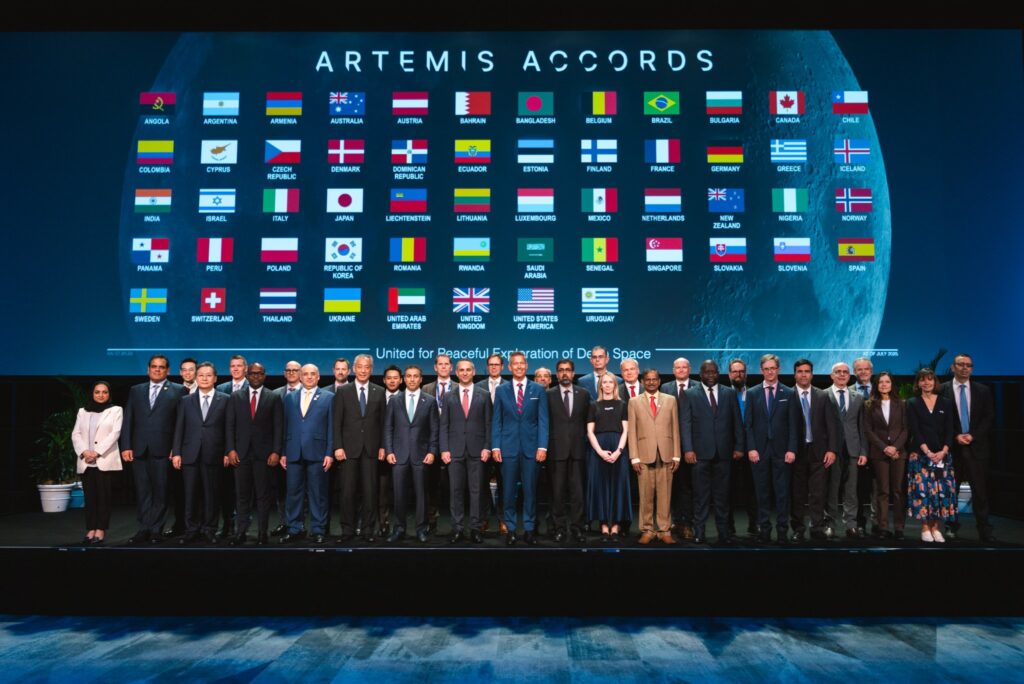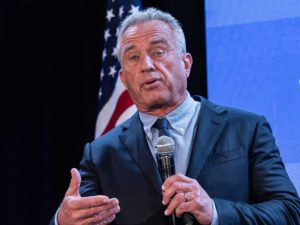
NASA, alongside leaders from international space agencies and government representatives, gathered on Monday to bolster the implementation of the Artemis Accords. These accords are a set of practical principles intended to guide the responsible exploration of the Moon, Mars, and beyond. The meeting took place during the 76th International Astronautical Congress (IAC) in Sydney, marking a significant step in global space collaboration.
In his opening remarks, acting NASA Administrator Sean Duffy highlighted the upcoming five-year anniversary of the Artemis Accords. “When President Trump launched the Artemis Accords in his first term, he made sure American values would lead the way—bringing together a coalition of nations to set the rules of the road in space and ensure exploration remains peaceful. After five years, the coalition is stronger than ever. This is critical as we seek to beat China to the Moon, not just to leave footprints, but this time to stay,” Duffy stated.
The Genesis and Growth of the Artemis Accords
The United States, spearheaded by NASA and the U.S. Department of State, initially signed the accords on October 13, 2020, with seven other founding nations. The accords emerged in response to the burgeoning global interest in lunar activities by both governments and private enterprises. As of now, the accords boast 56 country signatories, representing nearly 30% of the world’s nations.
The event in Sydney was co-chaired by NASA, the Australian Space Agency, and the UAE Space Agency. This diverse representation underscores the foundation for what is being heralded as a new Golden Age of space exploration and innovation.
Commitment from Global Partners
Enrico Palermo, Head of the Australian Space Agency, emphasized Australia’s role as a founding signatory and its focus on supporting new signatories in the Indo-Pacific region. “The purpose of the accords is as important—if not more important—as it was when first established. This annual gathering of principals at IAC 2025 is a key opportunity to reaffirm our collective commitment to exploring the Moon, Mars, and beyond in a peaceful, safe, and sustainable way,” Palermo remarked.
During the congress, leaders discussed crucial recommendations for non-interference in each other’s space activities, including transparency on expected launch dates, the general nature of activities, and landing locations. They also addressed issues such as orbital debris mitigation, disposal management, and the interoperability of systems for safer and more efficient operations.
Workshops and Future Directions
In May 2025, the United Arab Emirates hosted an Artemis Accords workshop that focused on topics such as non-interference and space object registration and reporting beyond Earth orbit. Ahmad Belhoul Al Falasi, UAE Minister of Sports and Chairman of the UAE Space Agency, expressed his nation’s commitment: “Through our active participation in the Artemis Accords and by organizing specialized workshops, we aim to reinforce the principles of transparency, sustainability, and innovation in space activities. We are committed to strengthening international partnerships and facilitating the exchange of expertise, thereby contributing to the development of a robust global framework for safe and responsible space exploration, while opening new frontiers for scientific research.”
“This reflects the UAE’s unwavering commitment to enhancing international cooperation in space exploration and promoting the peaceful use of space,” Al Falasi added.
Looking Ahead
As NASA continues its mission to establish a safe, peaceful, and prosperous future in space, more countries are expected to join the Artemis Accords in the coming months and years. This growing coalition not only strengthens international ties but also ensures that space exploration remains a collaborative and peaceful endeavor.
The meeting in Sydney represents a pivotal moment in the ongoing journey of the Artemis Accords, as nations come together to lay the groundwork for humanity’s next giant leap into the cosmos.







